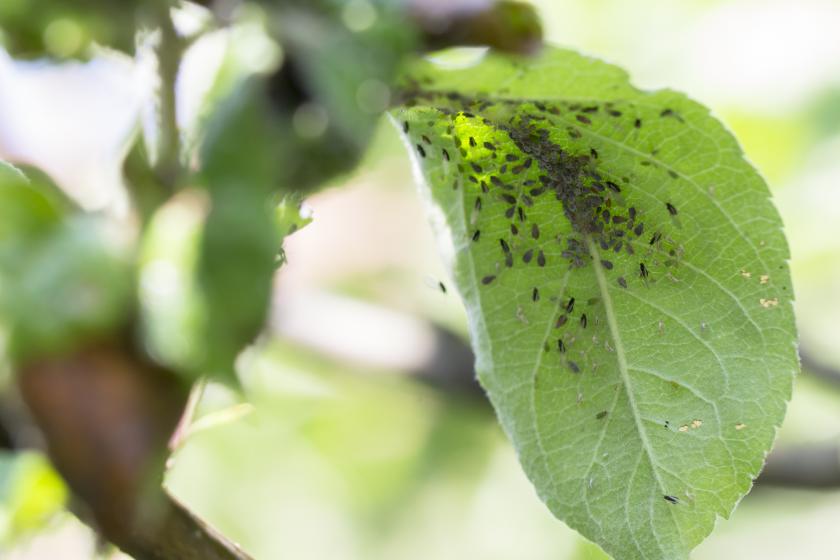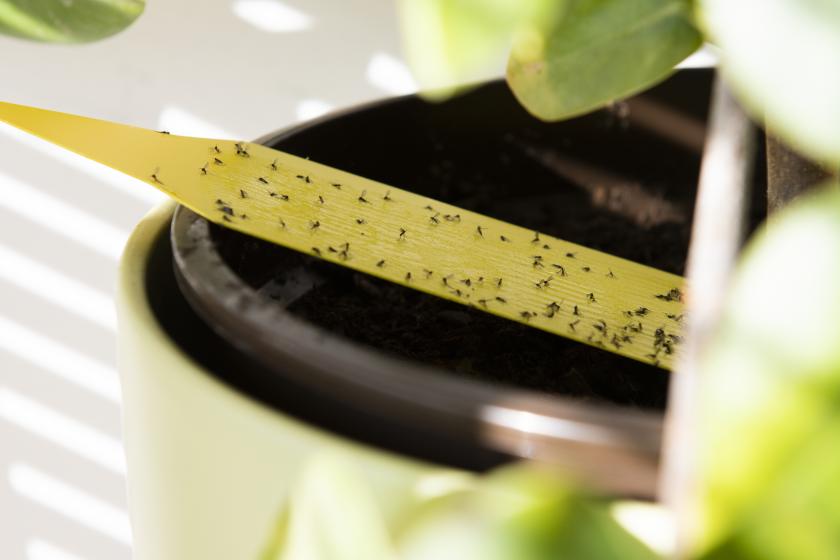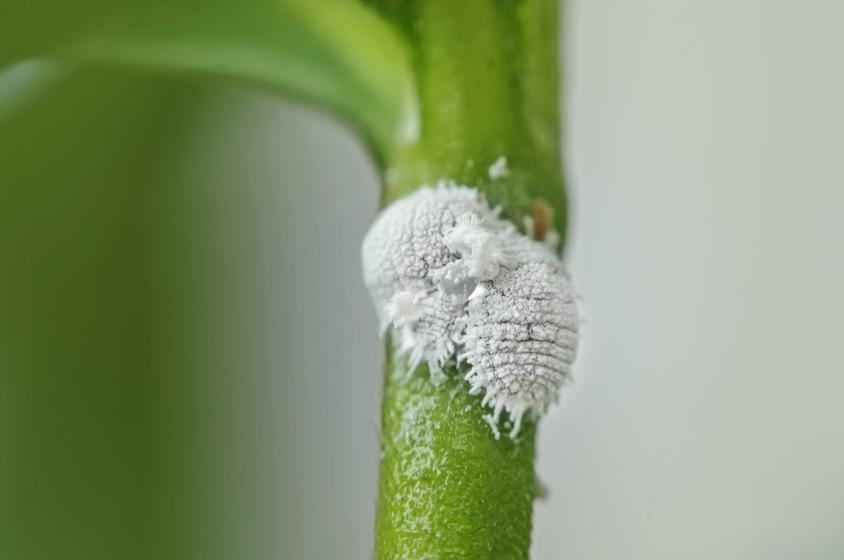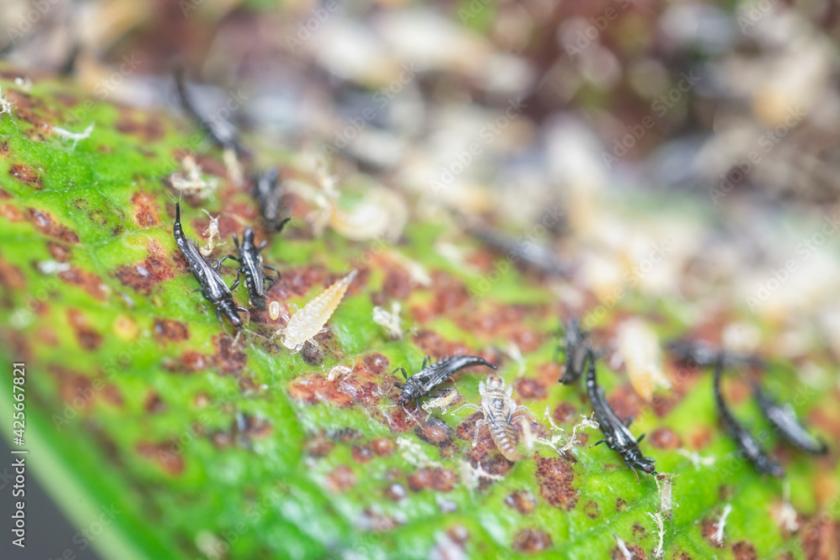Part of loving and caring for our houseplants is also keeping an eye out for things that may hurt them. Pests are a part of life, but there are a variety of ways to treat and resolve any problems that they may cause. Learning what these pests are, how to find them, and how to get rid of them is key to spotting them early enough to give your plants the treatment they need.
PREVENTION -
Preventing your plant babies from catching a bug starts with being aware of your plants and checking on them daily or every other day. If you are looking at your plants all the time, you will notice miniscule changes in their behavior and health. This is the #1 prevention tool to make sure your indoor plants stay happy. There are also practices such as cleaning the leaves, making sure your plants are not too close together, and regular pruning that will aid in the process of preventing pests.
THE LINE-UP -
Each pest has its own motive and personality that makes them special. Identifying their characteristics is fairly simple once you know what you’re looking for.
- Aphids -
These tiny, round insects like to pull sugars out of the leaves of your plants. In doing so, they also end up producing a type of “honeydew” on the leaves. If you are touching and caring for your plants often, you will notice this sticky texture immediately. An aphid's favorite food is new growth and they will leech the sugars from that new growth until the leaves wilt and distort. Aphids come in a variety of colors, most often you will find them to be black, red, yellow, or clear.
Most Common Plants Affected: Citrus plants, ficuses, schefflera, and any leafy plants with new growth.
Solution:
Since aphids love new growth, eyeing the new leaves on your plants will help you identify these pests early. Spray your plant down with water. Make sure the nozzle is on a hard setting, as this will knock many of the aphids off the leaves. Treat this problem with products like Triple Action from Fertilome or insecticidal soap. If you would like a more natural solution, neem oil is best for the job. Another way to naturally take care of aphids is to release ladybugs to eat them.
- Fungus Gnats -
These pesky flying insects are sure to drive you nuts. You will often find them in and around the soil of your plants. Although fungus gnats are more of a nuisance than a pest, their larvae can feed on the roots of your plants which can cause damage, especially in young plants.
Most Common Plants Affected: ferns, calatheas, African violets, geraniums, poinsettias.
Solution:
Fungus gnats are usually caused by overwatering your plants. With a soggy plant and soil, you will accumulate fungus, which these gnats are attracted to for placing their eggs. To rid your plants of these pests, start by not watering your plants as often. Letting the soil dry more between waterings will avoid fungus accumulation in the soil. If that is not working, place gnat papers in your pots. These yellow, sticky papers attract and trap adult insects. For the eggs and larvae, you will want to sprinkle in a granular insecticide. This will make the soil and roots inhabitable to the gnat eggs and larvae.
- Mealy Bugs -
These fuzzy creatures are not as cute as they seem. Mealy Bugs are another sap-sucking pest that likes to sip on your plants’ natural sugars. These pests can be elusive to spot early on, however, due to their fuzzy white appearance, they are very identifiable.
Most Common Plants Affected: aglaonema, ferns, palms, ficus, pothos, philodendron, schefflera, dieffenbachia.
Solution: Take a cotton swab and rubbing alcohol to swipe each mealybug off the leaves and stems of your plant. If the infestation is more intense, you can also treat this problem with insecticidal soap and granular insecticide. The insecticidal soap will discourage and make the plant distasteful to the bugs and the granular insecticide will make the plant itself poisonous to the pest for the time that it is effective.
- Spider Mites -
These pests come in large numbers, however, they can be very difficult to spot. Spider mites are usually first discovered by their faint webbing that appears where stems meet their leaves. Much like aphids, spider mites produce a sticky substance called “honeydew” that will be visually and tactically present on the undersides of your plants’ leaves. Their ability to spread rapidly is impressive, so treating this problem the moment it is noticed is important.
Most Common Plants Affected: Alocasia, calatheas, palms, crotons, cordyline, ivy, bird of paradise.
Solution:
For this pest, the infestation must be first analyzed. If you are only seeing small amounts of honeydew and slight webbing, you will want to treat immediately with a kill-on-contact solution such as triple-action or another insecticidal spray. This will paralyze the infestation so you have time to treat it further. If the infestation persists, you will need to give your plant an insecticidal soap bath. After spraying down the infected plant, take a microfiber cloth or soft-bristle brush and wipe the undersides of the leaves thoroughly. Depending on the severity of the infestation, after it has been resolved you may see that there will be existing spotting or distortion damage on the leaves.
- Thrips -
Thrips can cause your plant's leaves to turn pale, splotchy, and silvery, then wither away. You can start seeing a thrip infestation early by checking if the leaves are unnaturally twisted, curled, or discolored. Oftentimes, you will find them still living in the discarded leaves. Thrip infestations can happen quickly, so isolating your infected plants is important once the infestation is noticed.
Most Common Plants Affected: Palms, dracaena, alocasia, aglonema, dieffenbachia, monstera, peace lilies, ZZ plants.
Solution:
Like mealy bugs, you will want to spray the infected plant with a focused nozzle to get any loose thrips off. Then you will want to treat with insecticidal soap, neem oil, and/or granular insecticide. For very effective, natural results. Purchasing lacewing larvae (a beneficial bug) will eradicate any thrips problem.
HAVE NO FEAR -
Bugs happen! This does not mean you haven’t been taking very good care of your houseplants. Being prepped for anything is a part of the fun when it comes to planting care. For more information on solutions and products to get rid of pests, check out Mike, the Garden Gurus webinar here.





